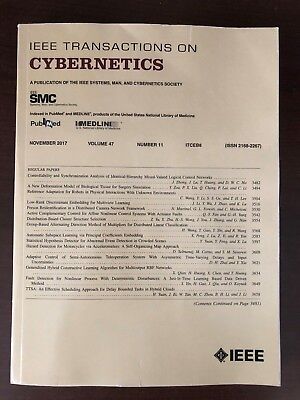Prescribed-Time Tracking Over Total-Time-Domain for Nonlinear Systems Subject to Mismatched Disturbance: An ESO-Based Control Strategy
IF 10.5
1区 计算机科学
Q1 AUTOMATION & CONTROL SYSTEMS
引用次数: 0
Abstract
This article aims to investigate the performance-guaranteed tracking problem for a class of uncertain nonlinear systems. The main goal is to attain control performance within prescribed-time (PT) limits despite the existence of mismatched disturbances. First, the mismatched disturbances are transformed into the equivalent forms. Second, for the unknown disturbance estimation, a PT extended state observer (PTESO) is developed to switch between the prescribed settling time失配扰动下非线性系统全时域规定时间跟踪:一种基于eso的控制策略
研究一类不确定非线性系统的性能保证跟踪问题。主要目标是在规定时间(PT)限制内实现控制性能,尽管存在不匹配的干扰。首先,将失配扰动转换为等效形式。其次,对于未知扰动估计,开发了一种PT扩展状态观测器(PTESO),在规定的沉降时间${\mathcal {T}}_{p}$之间切换,降低了阶数以减轻峰值现象的发生。在此基础上,构造了一种时变增益的基于eso的PT控制策略。这允许对干扰进行实时补偿,并且通过采用结合了障碍和二次型的李雅普诺夫函数来实现规定的性能。最后,通过涉及轮式移动机器人的数值演示说明了其优点和功效。本文的主要特点包括观测器估计未知不匹配干扰的能力和所提出的控制器对$t \in [t_{0}, \infty $)的充分有效性,确保跟踪误差在任何PT内收敛到零。因此,除了实现输出跟踪目标外,系统还可以表现出良好的瞬态性能。
本文章由计算机程序翻译,如有差异,请以英文原文为准。
求助全文
约1分钟内获得全文
求助全文
来源期刊

IEEE Transactions on Cybernetics
COMPUTER SCIENCE, ARTIFICIAL INTELLIGENCE-COMPUTER SCIENCE, CYBERNETICS
CiteScore
25.40
自引率
11.00%
发文量
1869
期刊介绍:
The scope of the IEEE Transactions on Cybernetics includes computational approaches to the field of cybernetics. Specifically, the transactions welcomes papers on communication and control across machines or machine, human, and organizations. The scope includes such areas as computational intelligence, computer vision, neural networks, genetic algorithms, machine learning, fuzzy systems, cognitive systems, decision making, and robotics, to the extent that they contribute to the theme of cybernetics or demonstrate an application of cybernetics principles.
 求助内容:
求助内容: 应助结果提醒方式:
应助结果提醒方式:


